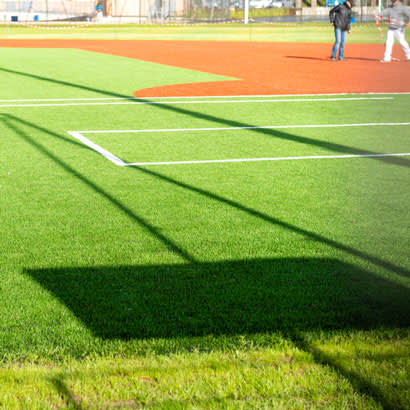
As shelter-in-place requirements are lifted, anticipate a surge in parks and recreation use. People have grown weary of staying inside and can’t wait to get outdoors in social and recreational settings. The demand for using sports fields and recreational areas, in general, will soon grow exponentially as the phases of re-opening the country progress.
When revenues are to be generated by the use of the fields, the pressure to make up for lost time to generate revenue will be immense. Park and recreation staff already have coaches and supervisors anxious to get fields open for camps; these are often the largest money-making events of the year, and for some, a primary means of supplementing their salaries or funding their leagues. This will be a challenge to forecast and address but be planning for this as best you can for your anticipated budget and labor situations. Everyone that has been at this for any length of time always agrees that managing natural grass fields is the easy part. One of the biggest daily challenges in our personal and professional lives is, quite simply, successful communication. Being an effective communicator in regulating field use is going to be critical to protect fields under such heavy traffic demands.
Develop a plan for field use and maintenance. Sports field maintenance can often be overlooked and not understood. As someone once said, “No one knows what we do until we don’t do it.” Sports Turf Managers Association (STMA) provides field recovery tips and advice on the Route to Recovery page in the Institute of Sports Field Management.
Communicate your plan for field maintenance practices to both your organization’s leadership as well as the end-user. Have serious discussions with your administration, owners, supervisors and clientele about responsible turfgrass use patterns. Educate those who may not understand the importance of certain practices by telling them what you plan to do and why. Remember that the most effective argument you can have in protecting the quality of your fields is maintaining a safe playing surface. Here are some additional effective communication techniques to help get your message across:
- Communicate frequently with field users and supervisors about the importance of getting the field maintenance under control before resuming use.
- Keep your message simple by providing clear and concise information. Get to the point by saying what you mean in as few words as possible and avoiding technical jargon.
- Actively listen to the issues and discussions brought to your attention. Listening is one of the most important parts of communication because it helps form good relationships and encourages more open communication in the workplace. Listening helps build connections by making the speaker feel heard and understood.
- Document and take photos to share when you are asked to explain and justify what needs to be accomplished and tell the story of why it needs to be done. You may have to explain what can happen if you cannot do something and the impact it could have on future use and budgets. Photos are also great for providing status updates.
- Use signage and social media to communicate physical distancing protocols. Continue to utilize and expand your use of on-site signs at your facility and take advantage of ‘virtual communication’ by utilizing social media platforms to instruct the public about facilities.
- Communicate face-to-face in a professional manner. Emails and/or text messages can often be misconstrued resulting in instructions being carried out incorrectly or misinterpretation of tone or mood. Although often overlooked, non-verbal communication is very important for conveying positive feelings and ensuring the correct message is conveyed.
While it’s never easy, there is a great opportunity for us to use these challenging periods as a time to educate our clientele and bosses about just how amazing a natural turfgrass system is, the expertise required to manage such a system, and how it is so easy to take turfgrasses for granted. You might as well get some credit for what you do now because very soon the skill and art of turfgrass management will once again be an afterthought as we return to more normal times. You get few opportunities where the public is paying attention to your communication efforts, and you have that chance for a short window now.
Best wishes in your return to whatever normal becomes in parks and recreation management for 2020!
James Bergdoll, CSFM, is the Director of Parks Maintenance for City of Chattanooga Public Works. Other contributors to this blog post are Michael Goatley, Ph.D., Virginia Tech University and Pamela Sherratt, Ohio State University; and the Sports Turf Managers Association.

